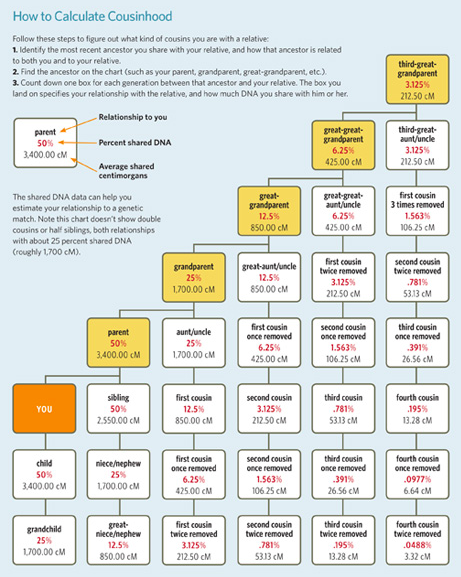I don’t know about you, but on both sides of my family, I literally feel like everyone is my cousin. HAnd honestly, it gives me some solace. There’s no confusion like “Hey, Aunt..uhh..I mean great-aunt So-and-so,”. I just slap the word “cousin” in front of anyone who’s label that I’m unsure of at the family gathering and slap an even bigger grin on my face. But, if you want to legitimately figure out who’s who in your family tree, this is how based on consanguinity and degrees of separation in your ancestry, not just your mom saying they “think” it’s your “somebody” or other.
Videos by Rare
Who is Your Cousin?
Let’s start easily because it does get complicated. A cousin is someone who is directly related to you via your ancestors, who are the people in your direct family bloodline. Ancestors are parents, grandparents, great grandparents, etc. The family tree continues with similar logic. Such as, any siblings to your ancestors (parent and grandparents) are aunts and uncles. Anyone who doesn’t fall under any of those is a cousin.
Determining The Degree of Cousinhood
–First cousins: Also called full cousin, this is any child of your aunt or uncle. You common ancestor will be your grandparents.
-Second cousins: These are the children of your parent’s first cousins. (So if your mom’s aunt or uncle has a child, that is your second cousin). Your great-great-grandparents will be your most recent common ancestor.
-Removed cousins: I’ll be honest, this one was a bit confusing for me. I had I had to look this up a few times to fully understand it. Here’s how Family Tree Magazine explains it:
“A remove happens when two cousins have different numbers of generations back to their most recent common ancestor. One generation of difference equals one remove. First, count back the number of generations from each cousin to the common ancestor. The cousin with the lower number of generations determines the degree of cousinhood—first, second, third and so on. Then subtract the lower number of generations from the higher number to find out how many times removed the cousins are.”
-Third cousins: A person shares a third cousin relationship with the children of their parents’ second cousins. Third cousins share at least one set of great-great-grandparents. A person shares first cousins once removed relationship with their parents’ cousins and their cousins’ children. At least one set of one person’s grandparents are the great-grandparents of the other person.
-First cousins twice removed: A person shares first cousins twice removed relationship with their grandparents’ cousins and their cousins’ grandchildren. At least one set of one person’s grandparents are the great-great-grandparents of the other person.
-Second cousins once removed: A person shares a second cousin once removed relationship with their parents’ second cousins and their second cousins’ children. At least one set of one person’s great-grandparents are the great-great-grandparents of the other person.
-Double Cousins: This category applies mostly to in-laws. Imagine your brother marries your wife’s brother, that would make you double cousins. In this unique family relationship, double cousins share both sets of grandparents.

If understanding family history in this way is a bit difficult for you, that’s pretty normal. Genealogists and anthropologists use a process called “collateral degree calculation” to help determine cousin relationships. They even have tools. One is this Cousin Relationship Calculator and this handy “cousin chart” [see above]. Now you’re prepared for the next family reunion!



